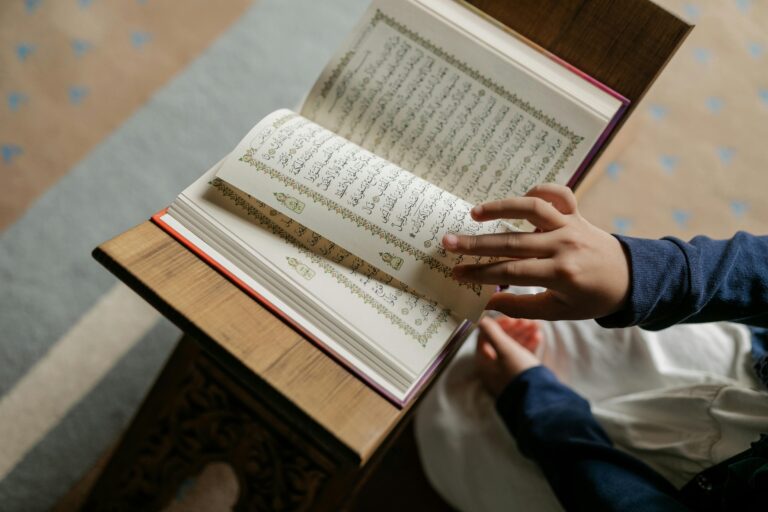Dua e Qunoot – Meaning, Arabic, Transliteration, and When to Recite
The Dua e Qunoot is one of the most beautiful and powerful supplications in Islam. It is recited in the Witr prayer, usually during the last rak’ah of Isha Salah.
This dua reflects a believer’s complete dependence on Allah (SWT) — asking for His help, mercy, and protection while expressing gratitude and submission.
Understanding Dua e Qunoot helps Muslims pray with deeper awareness and humility. In this article, we will explore its Arabic text, transliteration, meaning, significance, and the correct way to recite it according to Islamic teachings.

What Is Dua e Qunoot?
The word Qunoot (قنوت) comes from the Arabic root “Qanata,” which means obedience, humility, and devotion in worship.
In Salah, the term Qunoot refers to a special supplication made while standing, showing submission and reliance on Allah.
The Dua e Qunoot is specifically recited during the Witr prayer — the last prayer of the night after Isha. Some schools of thought also recite it in Fajr Salah during times of hardship (known as Qunoot an-Nazilah).
Arabic Text of Dua e Qunoot
Below is the authentic Arabic text of Dua e Qunoot as narrated from the Hadith of the Prophet ﷺ:
اللَّهُمَّ إِنَّا نَسْتَعِينُكَ وَنَسْتَغْفِرُكَ وَنُؤْمِنُ بِكَ وَنَتَوَكَّلُ عَلَيْكَ
وَنُثْنِي عَلَيْكَ الْخَيْرَ كُلَّهُ، نَشْكُرُكَ وَلَا نَكْفُرُكَ
وَنَخْلَعُ وَنَتْرُكُ مَنْ يَفْجُرُكَ
اللَّهُمَّ إِيَّاكَ نَعْبُدُ وَلَكَ نُصَلِّي وَنَسْجُدُ
وَإِلَيْكَ نَسْعَى وَنَحْفِدُ
نَرْجُو رَحْمَتَكَ وَنَخْشَى عَذَابَكَ
إِنَّ عَذَابَكَ بِالْكُفَّارِ مُلْحَقٌ
Dua e Qunoot Transliteration
Here is the transliteration of the dua for those who cannot read Arabic:
Allahumma inna nasta’eenuKa wa nastaghfiruKa, wa nu’minu bika wa natawakkalu ‘alayka,
wa nuthni ‘alaykal khayra kullahu, nashkuruka wa la nakfuruka,
wa nakhla’u wa natruku man yafjuruk,
Allahumma iyyaka na’budu, wa laka nusalli wa nasjudu,
wa ilayka nas’a wa nahfidu,
narju rahmataka wa nakhsha ‘adhabaka,
inna ‘adhabaka bil-kuffari mulhaq.
Dua e Qunoot in English
“O Allah! We seek Your help and ask Your forgiveness.
We believe in You and rely on You.
We praise You in the best manner and express our gratitude to You and do not deny You.
We forsake and turn away from those who disobey You.
O Allah! You alone we worship, and for You we pray and prostrate.
To You we strive and hasten.
We hope for Your mercy and fear Your punishment.
Indeed, Your punishment surely overtakes the disbelievers.”
Meaning and Explanation
Each line of Dua e Qunoot carries a profound message of faith and submission:
- “We seek Your help and forgiveness” – reminds Muslims that only Allah can assist and forgive.
- “We believe in You and rely on You” – expresses complete trust (Tawakkul) in Allah’s plan.
- “We forsake those who disobey You” – shows loyalty to Allah and separation from falsehood.
- “You alone we worship” – emphasizes Tawheed, the oneness of Allah.
- “We hope for Your mercy and fear Your punishment” – balances hope and fear in the believer’s heart.
This dua is a reminder that a Muslim’s strength, peace, and success come only through obedience to Allah.
When to Recite Dua e Qunoot
The Dua e Qunoot is recited during the Witr prayer, usually after the Ruku (bowing position) in the final rak’ah.
- Hanafi School: Recite Dua e Qunoot after Ruku in Witr.
- Shafi’i School: Recite before Ruku during Witr or sometimes in Fajr prayer.
- Maliki & Hanbali: Consider both positions acceptable based on authentic narrations.
If someone forgets to recite it, they can perform a short Sajda Sahw (prostration of forgetfulness) at the end of Salah.
Benefits and Virtues of Dua e Qunoot
Reciting Dua e Qunoot brings immense spiritual and emotional benefits:
- Strengthens faith – reminds the believer of complete reliance on Allah.
- Promotes humility – cultivates gratitude and fear of Allah.
- Encourages forgiveness – seeking Allah’s mercy purifies the heart.
- Protection from calamities – as taught in Qunoot an-Nazilah, it is a dua for protection in trials.
- Revives Sunnah practice – following the Prophet ﷺ’s authentic prayers strengthens connection with the Sunnah.
Common Mistakes When Reciting Dua e Qunoot
- Mispronouncing Arabic words due to lack of Tajweed practice.
- Forgetting certain lines or reciting them in incorrect order.
- Rushing through the dua without understanding its meaning.
👉 Tip: Practice the transliteration slowly, listen to a Qari, and recite with reflection (khushu‘).
Teaching Dua e Qunoot to Kids and Beginners
Parents and teachers can make learning easier by:
- Dividing the dua into small parts for daily memorization.
- Using transliteration + translation charts.
- Explaining the meaning to develop love and understanding.
- Reciting it together in Witr Salah regularly.
This helps children internalize the dua not as memorization, but as heartfelt communication with Allah.
Spiritual Reflection
Dua e Qunoot is more than words—it is a moment of standing humbly before Allah, acknowledging our dependence, and reaffirming our faith. When recited sincerely, it softens the heart and strengthens the bond between the servant and the Creator.
As the Prophet ﷺ said:
“Supplication is the essence of worship.” (Tirmidhi)
Let us recite Dua e Qunoot with sincerity, reflection, and hope for Allah’s mercy.
Conclusion
The Dua e Qunoot is a timeless reminder of faith, humility, and surrender. It connects the believer’s heart to Allah in the most personal way—seeking His mercy and forgiveness with every word.
Whether you are a new learner or have recited it for years, take time to understand its meaning and recite it with devotion. May Allah make this dua a source of light, mercy, and forgiveness for all of us. Ameen. 🤲
Deepen your understanding of beautiful duas like Dua e Qunoot with our qualified tutors at QuranTeacherOnline.co.uk — join today to learn Quran with Tajweed and meaning from the comfort of your home.







